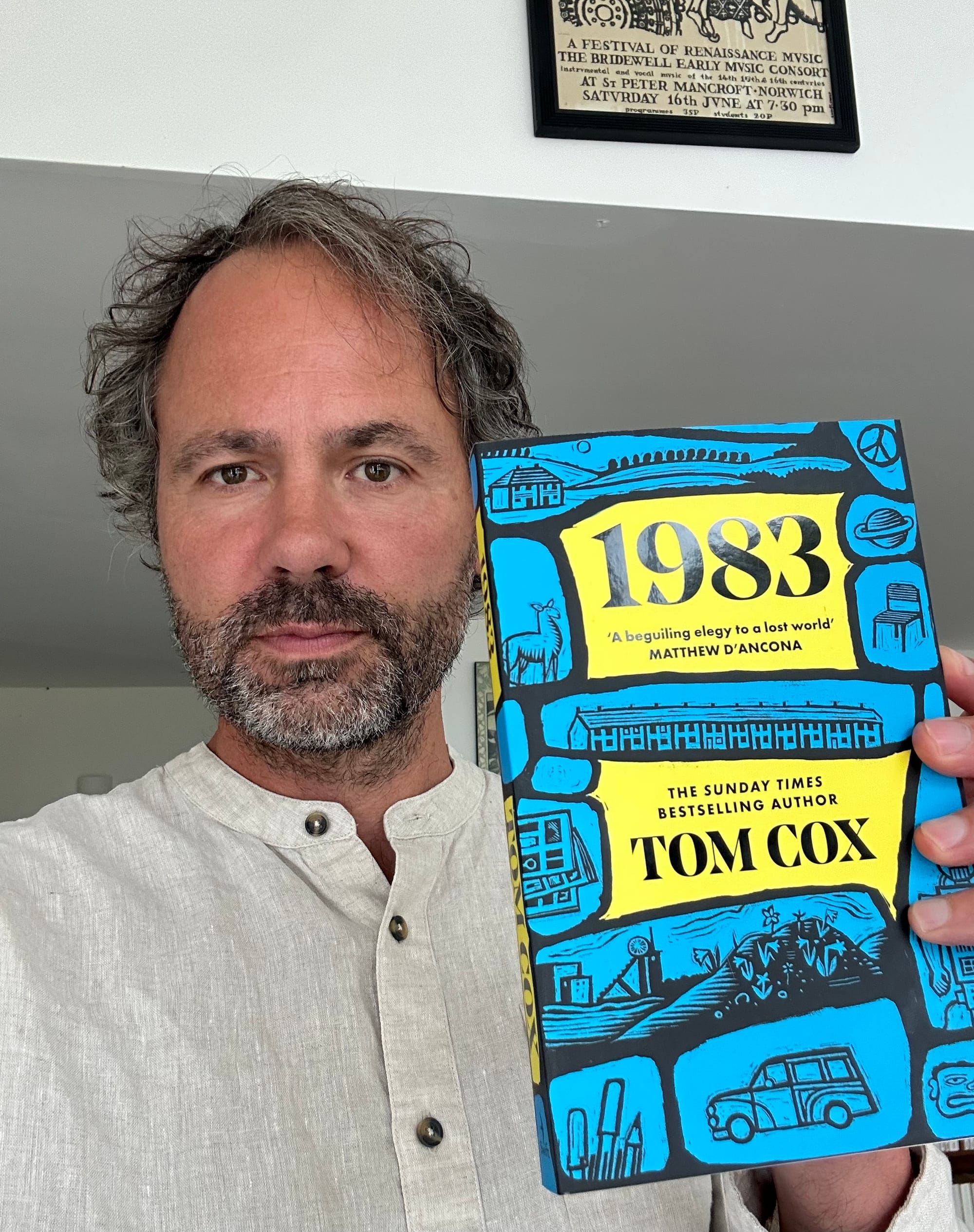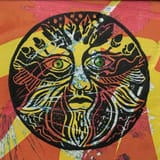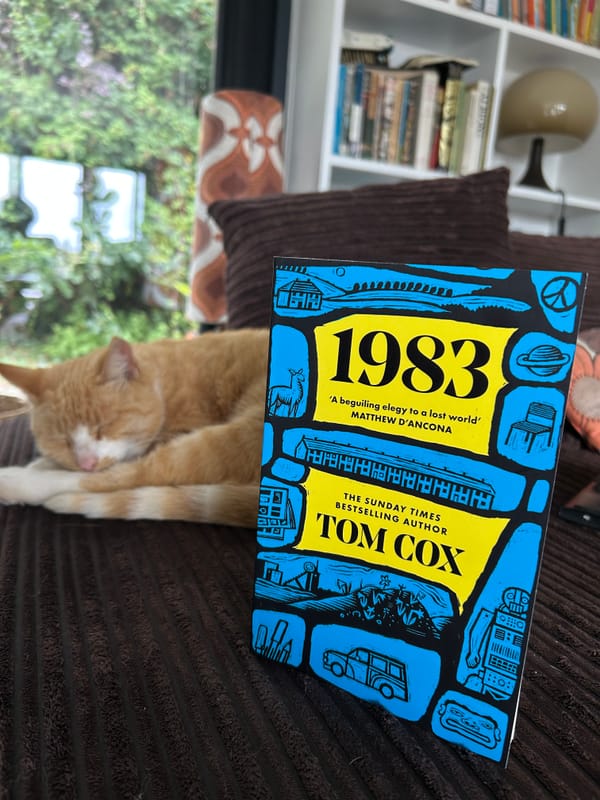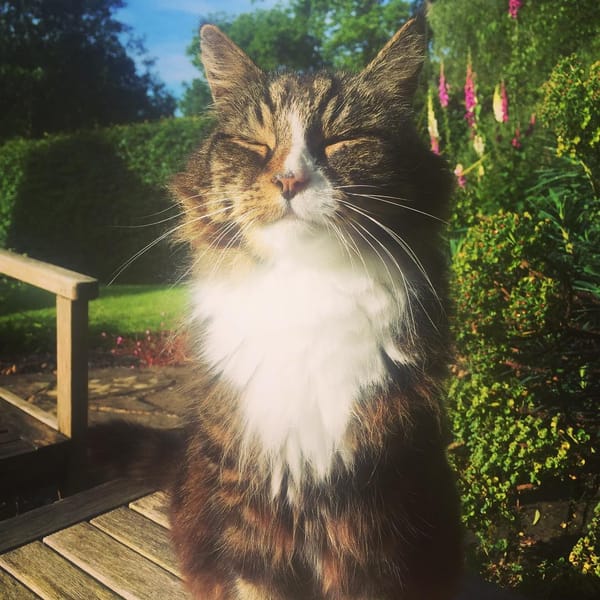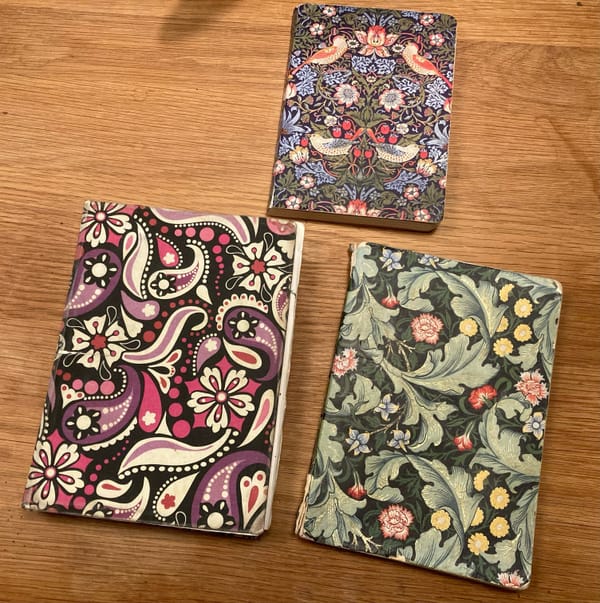A Great School
“I saw a frog!” a girl or boy might say. So that day we would learn about frogs, and draw, or even make, frogs.

My second novel, 1983, is published in paperback today. If you'd like a copy, you can get one from Blackwell's UK here, with free international shipping. I'm going to talk a little about the book, and the inspiration behind it, in a moment, but first I wanted to give you all an update about a change that I'm making to this newsletter...
When I decided to start publishing my online work via Substack, at the beginning of 2023, what appealed to me about it (a lot) was that it promised to be an escape from the increasingly infuriating ways of social media, outside the caprices of algorithms and centred around long form writing sent directly to the people who want to read it. Having quit journalism in 2015 I'd already been emailing my essays and stories to readers via my website for several years but Substack quickly broadened the reach of that writing - quite thrillingly, for a spell. But Substack has become a markedly different place of late, much more centred around its Notes app, networking and short form noise, crowded with an influx of celebrities and videos, and generally much more in line with the social media it once promised to provide an alternative to. Some people probably like it that way. Some people don't. I'm sure it's more lucrative for Substack. Whatever the case, I've decided that it's time to make a change. My approach to my writing will be the same but from this point on I'll be publishing these newsletters via Ghost instead of Substack.
Essentially this is just me simplifying things and going back to a similar system that worked for me when I published via my website: I write about something that preoccupies or interests or excites me, send it to people's inboxes, and if they feel they want to support my writing financially, they can choose to, for a variety of monthly fees, ranging from £1. Alternatively there's also a tip jar, in case anyone would like to make a one-off contribution. There's no noisy distracting app, the company is, unlike Substack, a non-profit, with a small workforce, which isn't funded by venture capitalists and doesn't take a ten percent fee from its writers (on top of what those writers pay Stripe to process payments). Additionally I don't have to worry about what I might be supporting, politically, by attaching my name and work to it.
Obviously it feels like a slightly frightening step - especially as, due to the collapse of my ex-publishers, Substack has provided an economic safety net for me recently - and I realise that by doing this I'm probably cutting off potential "growth" that an organisation with the might of Substack promises for writers, but I've also been getting increasingly excited about what I can achieve this way (so much so that I've recently been holding off a tiny bit on the regularity of Substack posts and stockpiling lots of writing to post here over the next few weeks) and the potential benefits to my creative mind. If it's a deciding process between a) fighting for space on yet another form of social media but potentially massively expanding my audience because of a few lucky viral posts and b) opening up more time to write the long form pieces that really make me happy, for a smaller, less-overwhelmed readership who are more likely to read what I write, then that means, for me, there is no deciding process at all.
And what of you, kind reader? Well, your role is simple. If you subscribed to my Substack, either free or paid, that subscription will carry over to Ghost, precisely as it stood. There is nothing you need to do. But if you would like to support me here, for the price Substack set as my suggested monthly fee when I first started there, or a smaller contribution of your choice, I'd be extremely grateful, and you will see that option below when you hit "Subscribe Now". My intention is to keep all but a tiny percentage of my writing outside the paywall, in the hope that this will work for me, and for everyone else.
Thanks for reading!
Tom
I was digging through some old photos at my mum and dad’s house a couple of years ago and found this one of my primary school class.

I’m the small fry on the back row in the blue dungarees, being strangled, next to my friend Edward, who is pulling his favoured “googly eyes” face. The girl on the far right, in the front row, is Emma Beldham, who, like me, had a mum who taught at the school. The redheaded boy with his arm around her is Danny McGuire, who was full of strong political opinions, and, just before my fifth birthday, informed me that Santa Claus didn’t exist. Danny’s mum always had big bowls of salted popcorn in her living room.
I believe the photo was taken in 1982, although - because the location is Nottingham and most of the children are from working class backgrounds with parents who live hand to mouth - the hand-me-down clothes and homemade haircuts might suggest to some that it was a little earlier. I love what an explosion of colour it is, what it says about the school: the excitement and innocence and diversity of the place.

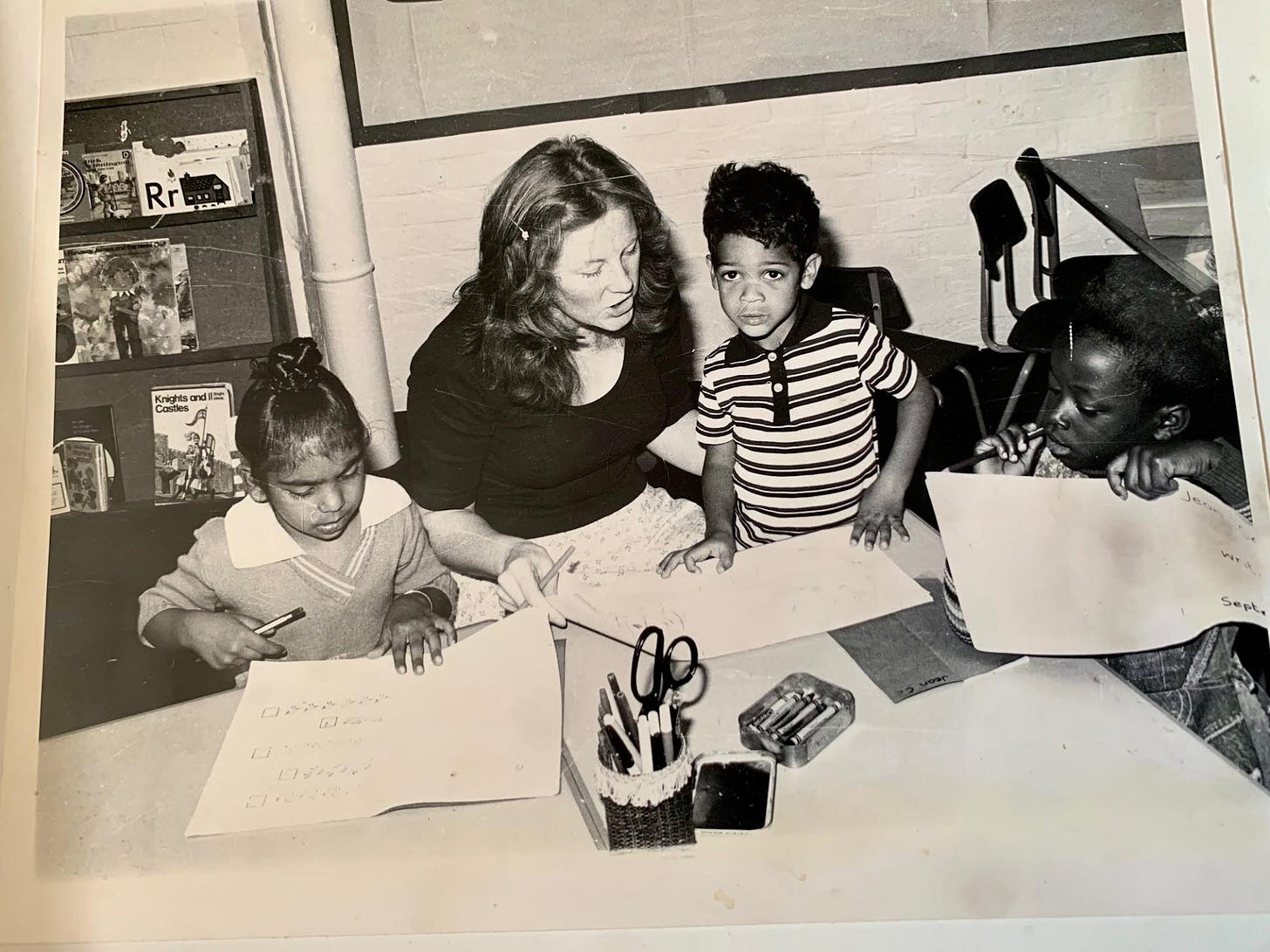
The school was called Claremont: an allegedly haunted red brick building - formerly a wartime hospital - on an urban street, where two men in baseball caps once stole my mum’s car, close to, but not quite in, some of the city’s most dangerous and troubled neighbourhoods. With its focus on child-centred learning, I suppose it could be described as an alternative sort of school, but it certainly wasn’t alternative in any official or trendy way. It was, on the surface, an ordinary school, in an ordinary city, but the particular collection of teachers, working in harmony with an inspiring, visionary headmistress, made it a very special and free place. With time, I realise, more and more, what an important part of me it is. My secondary school - a vastly less pleasant environment, which did its best to close all the parts of my mind that Claremont had opened - became a weirdly important part too, but it was Claremont that taught me about creativity and art and imagination. It was the place that first made me realise it was ok to follow my own unique path: something that I do now more than ever. When I’ve had setbacks in my writing career - witnessed the cliques and clans and elitism of the media and publishing worlds, and felt like the whole place was just too impossibly hard to get by in, especially for someone of my background - there was a quiet breeze at the back of me that gave me the belief to keep plugging on, and I wonder now if that breeze was Claremont.
I found myself thinking a lot about this a while ago. The photo of my class took me down all sorts of rabbit holes. I remembered so, so much: the time, for example, that I got stuck in a chair and - while my classmates watched me cry buckets of tears - was expertly cut out of it by the school caretaker, Bill, who looked like this.
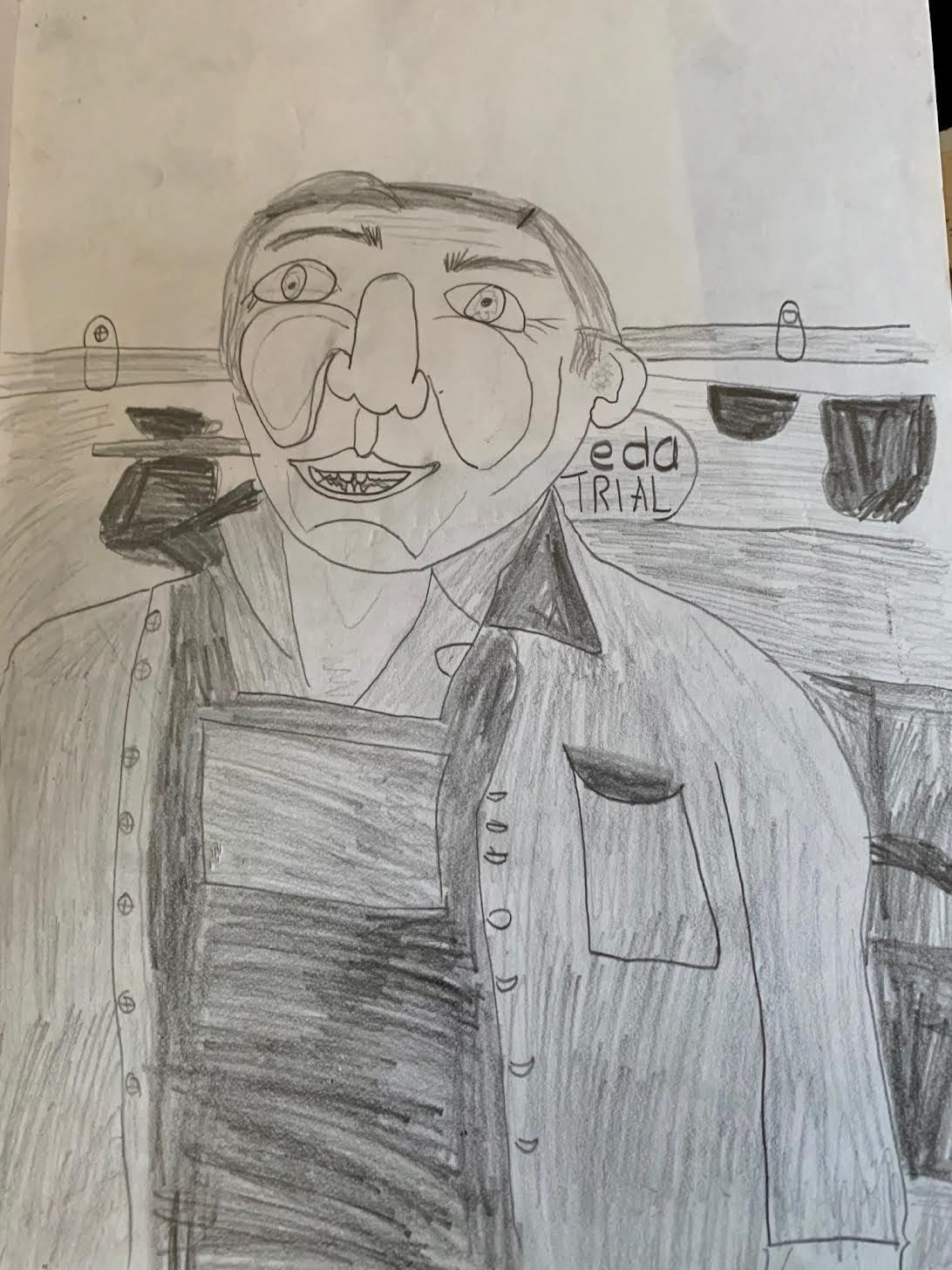
I remembered the way a whole day’s teaching would be based on something a child said had happened at the weekend. “I saw a frog!” a girl or boy might say. So that day we would learn about frogs, and draw, or even make, frogs.
I remembered the big sheets of paper Miss Needham would spread across the tables, allowing a dozen of us to all draw on it simultaneously, creating a huge, collaborative visual narrative. I remembered how wonderfully lost I would get in that narrative.
I remembered Edward, and playing with him in my garden, near our asbestos garage, which would later put me in hospital (though thankfully not with asbestosis), and going to his house, and all his brothers and sisters, and the big trunk of shoes where the children grabbed two shoes to wear that day, sometimes from a matching pair, but not always.
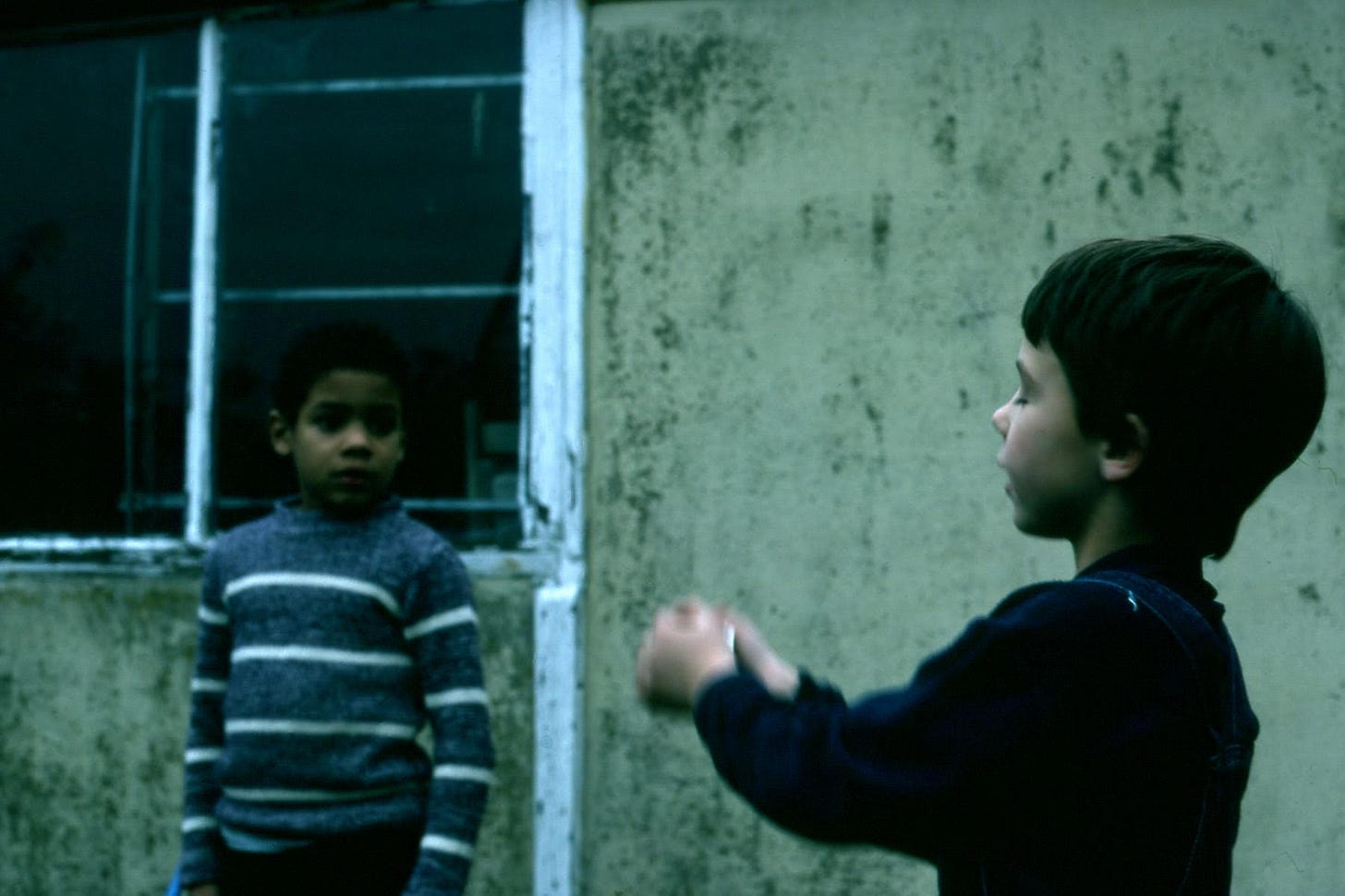
I remembered going to Alton Towers theme park for my birthday with Edward - whose singing skills you can witness in this clip (the second of two) from the school’s Harvest Festival, filmed by BBC Playschool - and my friend Benji, who had recently discovered the word “typical” and now, with me as his eager assistant, employed it as a useful catchphrase, applicable to almost all life situations.
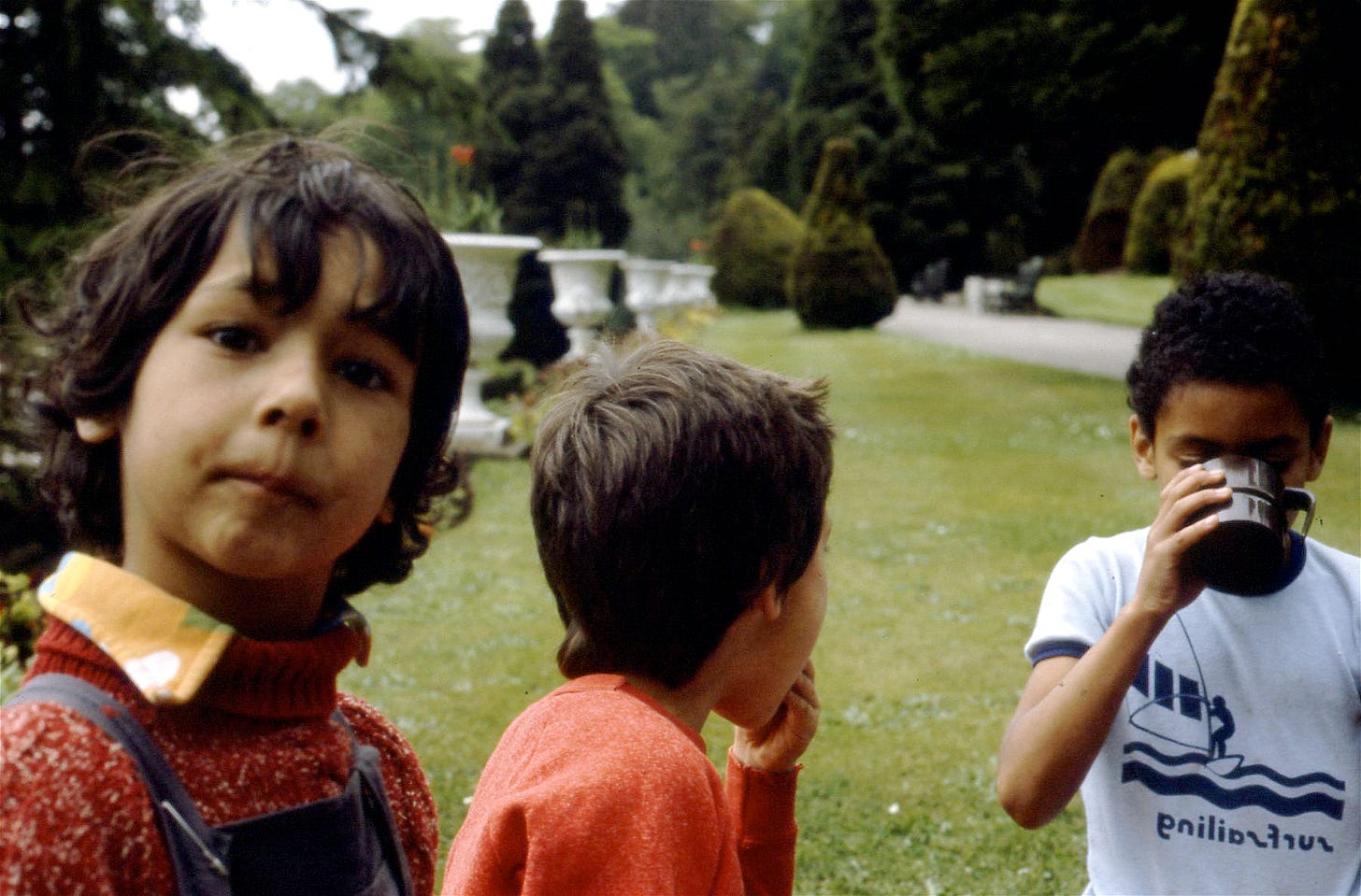
I remembered Julian Kashdan, who had extraordinarily shiny hair, which I liked to idly twiddle during class, and who was always totally mellow about that invasion of his personal space, and who later came to my house for an advanced level bike riding lesson.

I remembered another friend, who arrived in school one morning and announced that his mum’s boyfriend was in hospital because his mum had bitten his willy too hard. And I remembered us speculating, with our classmates, about why his mum would have bitten her boyfriend’s penis, and reaching the consensus that it must have been because she was cross.
I remembered CND funfairs, and remembered my ‘Nuclear Power? No Thanks’ t-shirt, which I used to love.

And was flabbergasted to find that, despite me now being two whole feet taller, it is still a perfect fit.
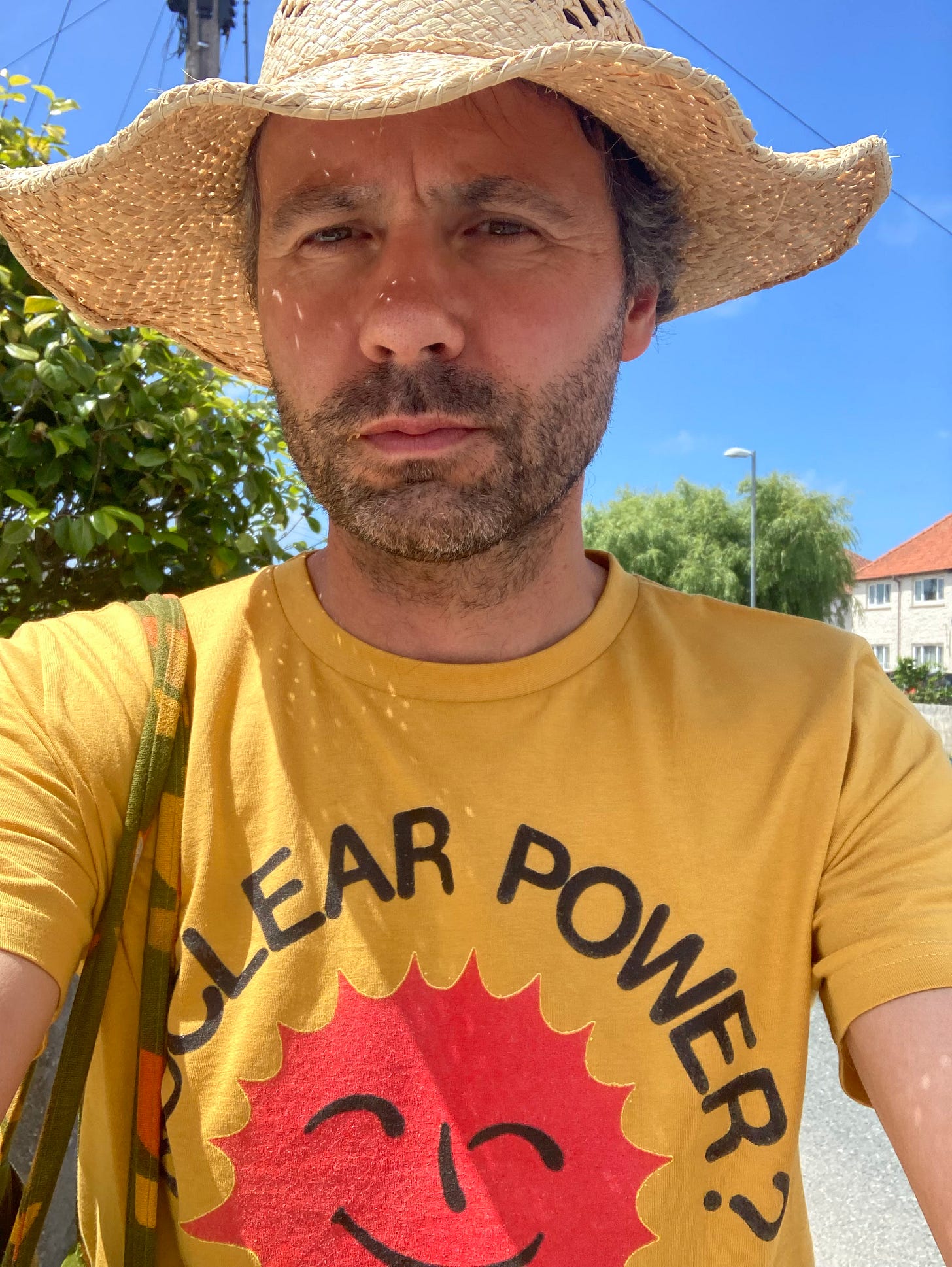
And when I couldn't stop thinking about it all, I realised the only reasonable option was to write a novel inspired by Claremont, featuring a school not unlike it. My memories of Claremont made the novel a lovely place to live inside for a few months. I called it 1983 and it is published in paperback today.
1983 became a book about many other things, too: much more than an autobiographical, nostalgic novel about the 80s, much more anarchic and intuitive and free. But I doubt I’d have been able to write it in the way I did if not for what Claremont instilled in me at an early age.
When I made the following observation, I was talking about what years of writing and reading has taught me. But I think it was something that I was already beginning to learn at Claremont, already, all those years ago.

I wanted the people who were there at the beginning to know all this.
So, when I’d finished the book, I dedicated it to them.

